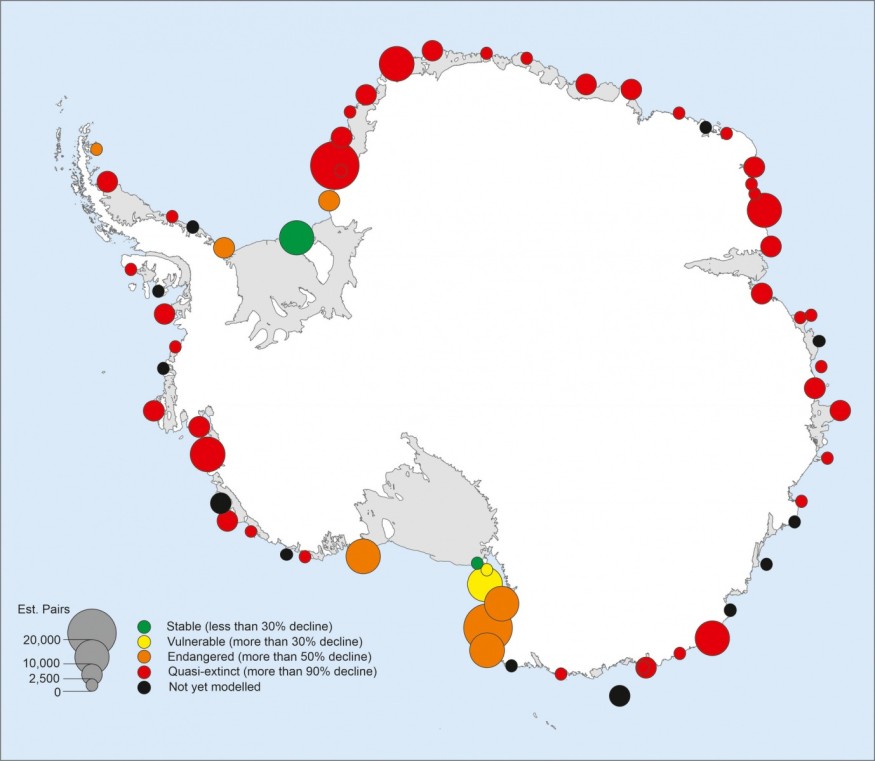Out of the 18 species of penguins in the world, the majority of it is confined in the southern latitudes, either in Antarctica or on the various sub-Antarctic islands surrounding the South Pole.
A recent study has discovered new emperor penguin colonies in the continent, revealing around 20 percent more of them than previously thought. The researchers used a satellite mapping technology that shows their existence even from space.
The results provide an important milestone for monitoring the impact of climate change and global warming on the population of this iconic bird.

11 New Emperor Penguin Colonies Discovered from Space
The authors published their report in the journal Remote Sensing in Ecology and Conservation, in which they used images taken by the European Commission's Copernicus Sentinel-2 satellite mission to map the location of the birds.
The researchers were able to identify 11 new emperor penguin colonies, three of which were already identified but were never confirmed. This new addition of colonies takes the global census to 61 colonies around Antarctica.
Typically, emperor penguins need ice to breed, which explains their location in areas that are very hard to study because it is very remote with a temperature as low as -58 degrees Fahrenheit (-50 degrees Celsius).
Due to that, scientists such as those from the British Antarctic Survey (BAS) took about ten years before finding the penguins as they were following their guano stains on the ice.
"This is an exciting discovery. The new satellite images of Antarctica's coastline have enabled us to find these new colonies. And whilst this is good news, the colonies are small and so only take the overall population count up by 5-10% to just over half a million penguins or around 265,500-278,500 breeding pairs," says lead author and geographer at BAS Dr. Peter Fretwall.

Climate Change and Penguin Colonies
Since the emperor penguins are known to breed on ice and, therefore, vulnerable to the loss of sea ice, current projections of climate change would inevitably affect their habitat and would likely decline.
The majority of the newly discovered colonies are located at the margins of the breeding range of the emperor penguins. That means these locations are likely to vanish as the temperature continues to get warm.
It is also what Dr. Phil Trathan, the Head of Conservation Biology at BAS. He has been studying the birds for the past 30 years, and he said that although it is good news to find new colonies, the breeding sites are all located in the region where model projections suggest a decline in the population of the emperor penguins.
Trathan described the newly discovered emperor penguins colonies as the "canaries in a coal mine," so experts are doing a close watch on these birds.
The scientists said that many emperor penguin colonies are found located far offshore on sea ice that has formed around some icebergs. The behavior of these well-known species found 180 kilometers offshore are a surprise to many experts.
READ MORE: Arctic Sea Ice Recovery From the Effects of Climate Change is Impossible












